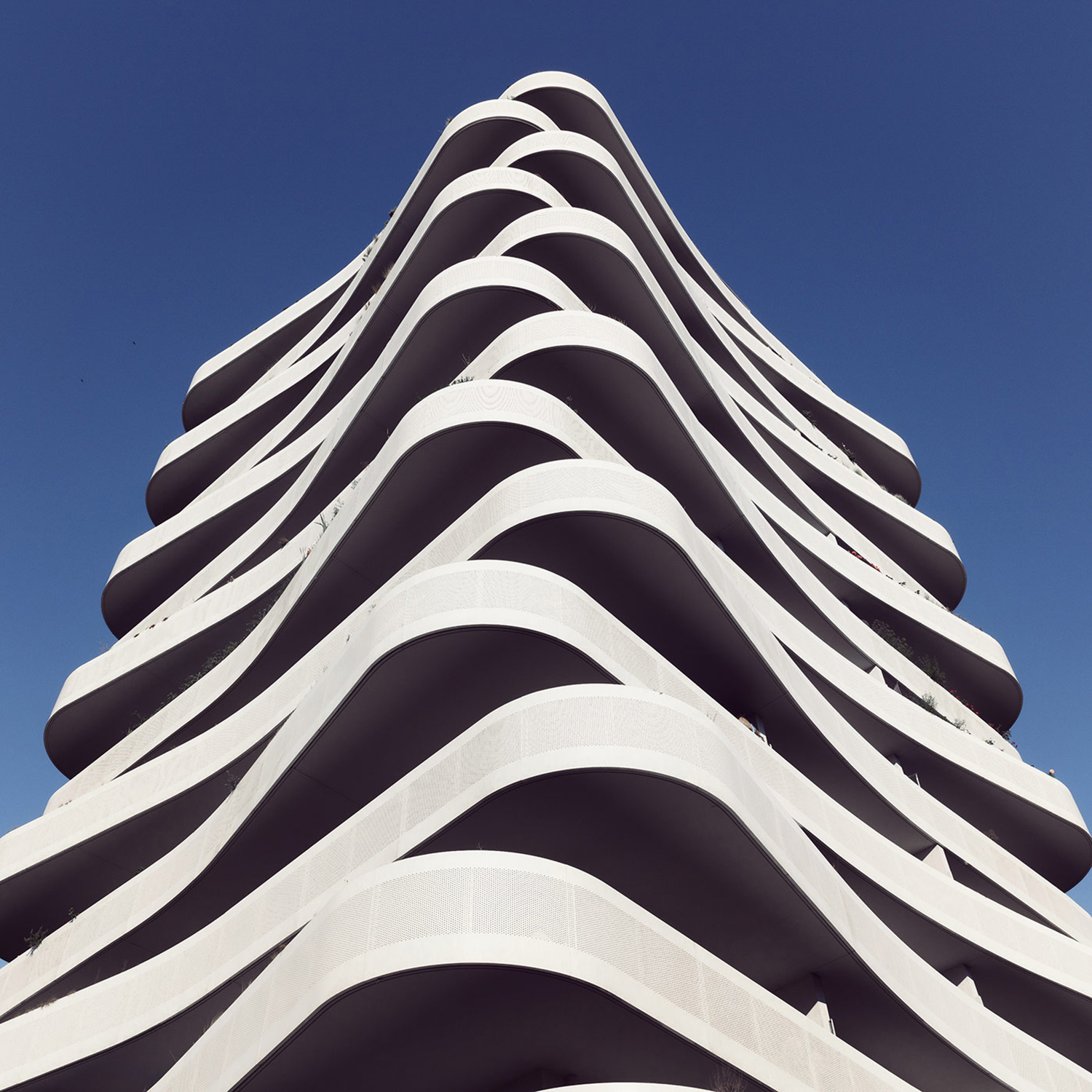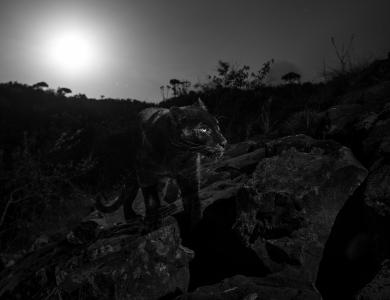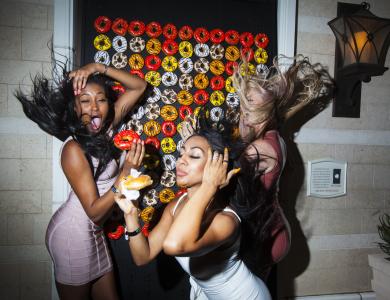
Sebastian Weiss is an architectural photographer based in Hamburg. Taking the time to study, examine and dissect each building he's visually drawn to, Weiss sees each of his photoshoots more like a conversation with a person than photographing an inanimate object. 'I look for the personality of a building and its secrets or traits,' he says. Unswayed by status or popularity, Weiss photographs a vast range of buildings – from the trivial and municipal to the grand and historic. If a structure has charisma it normally makes the cut. Between 2013 to 2018 he worked as a photo columnist for AD Architectural Digest Germany and in 2017 he became a professional member of the BFF Berufsverband Freie Fotografen und Filmgestalter e.V. – translated as the Professional Association of Freelance Photographers in Germany.
Sebastian takes over our Instagram feed for the week (June 23 to 29, 2019), sharing a set of his striking shots. We caught up with him to find out more about his graphic approach to photographing architecture.
Your background is in engineering, has your experience in this field fed into your photographic practice and if so, how?
I think my background in engineering studies, conversations with architecture students and my experience as an art director in advertising and design agencies have shaped my photographic work. While studying civil engineering at the Technical University in Dresden during the 1990s, I was inspired by the creative viewpoints of a building as much as its construction.
What are your creative influences?
Alongside the work of contemporary photographers, I'm inspired by individual architects, like the legendary Neutra, Niemeyer, Siza and Aalto, and firms like 3XN Architects (Denmark) or Aires Mateus (Portugal). I adore the Düsseldorfer Photoschule, in particular Thomas Struth.
I grew up in a musical household in the former German Democratic Republic. My mother was an opera singer so she took us regularly to operas and concerts. I spent many school holidays in concert halls and enjoyed the atmosphere a lot – I studied cello at a music school too. When I have time, I still play the cello and my little son sings and dances to the songs. Making music has always been important to me, because I find inspiration and rest in it, particularly nowadays in our digitalized world. I'm also a big fan of Expressionism, particularly the works of Paul Klee and Franz Marc. They are fantastic.
Your photographs are distinctive thanks to your minimalistic and graphic style. How did you come to this visual signature?
Before I became a full-time photographer I was an Art Director for 15 years and worked mostly for museums and publishing houses who put a lot of emphasis on modern, reduced design. My experiences from this time have surely molded my style. When I'm photographing I try to carve out the essence of the building's construction to create a kind of portrait. However, my intention is to only extract and underline what is already there.
Architectural photography is sometimes criticized for being too stylized and not reflecting reality. What’s your opinion on this controversial subject?
I understand this discussion, absolutely. For my personal taste, some images are far too exaggerated. Less is more is my guiding principle. Architects and their clients are under great pressure and want perfect pictures of their buildings from a photographer, so blemishes may have been retouched massively if necessary. Many of today's images are almost perfectly directed and processed. While photo manipulation is nothing new, take as an example a picture from 1860 where the head of Abraham Lincoln was mounted on the body of another politician, I tend to follow the statement of architect Ma Yanson (MAD Architects, China): 'Strong architecture doesn’t require a lot of editing. The building and space should speak for itself.' My goal is to photograph a 95% finished image at the location and edit only slightly in post-production. In my view, images must be authentic and honest.
There are lots of elements when photographing buildings you can't control - the light and weather as examples. How to combat these creative challenges?
While I check any weather reports while preparing for a shoot I have the privilege to be relatively spontaneous when I go and photograph a building. The seasons play a crucial role in my choice of locations, that’s why during the summer months I prefer to take photos in the north, whereas in winter I travel to the south. I also conduct meticulous research of each location in order to visit the building at the right day time and benefit from optimum lighting conditions. Of course with any photography, patience, perseverance and humility are required.
You’re a professional member of the Professional Association of Freelance Photographers and Film Creators (BFF). How does this membership benefit your career and your photography?
The Professional Association of Freelance Photographers and Film Creators (in German: Berufsverband Freie Fotografen und Filmgestalter e.V., BFF) is for those producing work of the highest quality. This is guaranteed by its renowned founders and honorary members - including also legendary international photographers such as Professor FC Gundlach, Peter Lindbergh and Oliviero Toscani. This year, the BFF celebrates its 50th anniversary and represents more than 500 members. Being a part of this community means I have access to a strong network, knowledge resource and the opportunity to attend conferences and exhibitions. The BFF supports the members in legal matters, such as copyright infringement.
See Sebastian Weiss' portfolio here
Check out his Instagram takeover here



